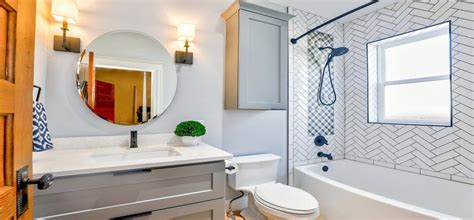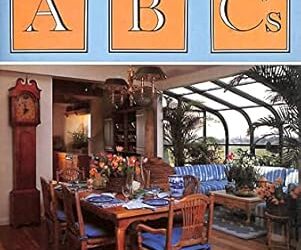Embark on a journey through the world of interior renovation, where homes are transformed into masterpieces and living spaces are elevated to new heights. This introduction sets the stage for a captivating exploration of trends, budgeting tips, and the debate between DIY and professional renovation projects.
Dive deeper into the realm of interior renovation as we uncover the secrets to creating stunning spaces that reflect your style and personality.


Importance of Interior Renovation
Interior renovation plays a crucial role in enhancing living spaces, creating a more functional and aesthetically pleasing environment for homeowners. By updating and modernizing the interior of a property, individuals can transform their living spaces to better suit their needs and preferences. One of the key benefits of interior renovation is the potential increase in property value. By investing in high-quality materials, modern designs, and efficient layouts, homeowners can significantly raise the overall value of their property. This is particularly advantageous for those looking to sell their homes in the future, as renovated interiors can attract more buyers and lead to higher selling prices.Examples of Effective Interior Renovation Projects
- Updating a kitchen with new cabinets, countertops, and appliances to create a more modern and functional space.
- Renovating a bathroom with contemporary fixtures, tiles, and lighting to enhance both the aesthetic appeal and functionality of the room.
- Transforming a plain and outdated living room into a stylish and inviting space through the use of new furniture, decor, and lighting.
Popular Interior Renovation Trends
In today's interior renovation landscape, several trends have emerged that are shaping the way homes are designed and renovated. From smart home technology integration to sustainable materials and open floor plans, these trends are influencing the choices homeowners make when updating their living spaces.Smart Home Technology Integration
Smart home technology continues to gain popularity in interior renovation projects. Homeowners are increasingly incorporating devices and systems that allow for remote control of various aspects of their homes, such as lighting, temperature, security, and entertainment. From smart thermostats to voice-activated assistants, the integration of technology into the home is transforming the way we live and interact with our living spaces.Sustainable Materials and Eco-Friendly Practices
The use of sustainable materials and eco-friendly practices has become a major focus in interior renovation. Homeowners are opting for materials that are environmentally friendly and promote energy efficiency, such as reclaimed wood, bamboo flooring, and low VOC paints. Additionally, eco-friendly practices like recycling construction waste and using energy-efficient appliances are becoming standard in renovation projects, reflecting a growing awareness of sustainability and environmental impact.Open Floor Plans
Open floor plans have become increasingly popular in recent years, with homeowners opting for layouts that maximize space and promote connectivity between different areas of the home. By removing walls and barriers, open floor plans create a sense of flow and openness, making spaces feel larger and more inviting. This trend has had a significant impact on interior renovation projects, as homeowners seek to create multifunctional spaces that cater to modern lifestyles and preferences.Budgeting for Interior Renovation
When planning an interior renovation project, one of the most crucial aspects to consider is setting a realistic budget. Proper budgeting ensures that the project stays on track and avoids any financial surprises along the way. Here are some tips on creating a budget for an interior renovation project and strategies to save costs without compromising quality.Tips for Creating a Budget
- Start by assessing your needs and priorities for the renovation. Determine which areas of your home require the most attention and allocate a budget accordingly.
- Research the average costs of materials and labor in your area to get an idea of how much you should budget for each aspect of the renovation.
- Consider setting aside a contingency fund of about 10-20% of your total budget to account for any unexpected expenses that may arise during the renovation.
- Create a detailed spreadsheet outlining all costs, including materials, labor, permits, and any additional fees to keep track of expenses throughout the project.
- Consult with a professional contractor or designer to get accurate estimates and ensure that your budget aligns with your renovation goals.
Cost-Saving Strategies
- Reuse or repurpose existing materials and furniture whenever possible to save on costs. Upcycling can give your space a unique look while reducing expenses.
- Shop around for the best deals on materials and consider buying in bulk to take advantage of discounts offered by suppliers.
- Do some of the work yourself, such as painting or minor repairs, to save on labor costs. However, leave complex tasks to professionals to avoid costly mistakes.
- Consider alternative materials that offer a similar look and quality at a lower price point. For example, laminate flooring can mimic the look of hardwood at a fraction of the cost.
Small vs. Large-Scale Projects
- For small-scale interior renovation projects, focus on high-impact areas such as kitchens and bathrooms to maximize the return on investment. Allocate a larger portion of your budget to these key areas for a significant visual impact.
- Large-scale projects, such as whole-house renovations, require a more comprehensive budgeting approach. Break down the costs by room or section to ensure that each area receives adequate funding for a cohesive end result.
- Consider phasing the renovation if budget constraints are a concern for large-scale projects. Prioritize the most critical areas first and tackle the rest in stages as budget allows.
DIY vs. Professional Interior Renovation
When it comes to interior renovation, homeowners often face the decision of whether to tackle the project themselves or hire professionals. Both DIY and professional approaches have their own set of advantages and disadvantages, and understanding them can help make an informed decision.Pros and Cons of DIY Interior Renovation Projects
DIY interior renovation projects can be a rewarding experience for those who enjoy hands-on work and have the necessary skills. It allows homeowners to have full control over the design and execution of the project, often resulting in a sense of accomplishment. Additionally, DIY projects can be more cost-effective as labor costs are eliminated.- Pros of DIY:
- Cost-effective
- Personalized touch
- Hands-on experience
- Cons of DIY:
- Lack of expertise
- Time-consuming
- Potential for mistakes
Benefits of Hiring Professionals for Complex Interior Renovation Tasks
For complex interior renovation tasks that require specialized skills and knowledge, hiring professionals can ensure a high-quality outcome. Professional contractors have the expertise to handle intricate designs, structural modifications, and technical aspects of the renovation process. They can also provide valuable insights and recommendations based on their experience.- Benefits of Hiring Professionals:
- Expertise and experience
- Efficiency and timeliness
- Quality assurance
Examples of Successful DIY and Professional Interior Renovation Projects
There are numerous examples of successful DIY interior renovation projects where homeowners have transformed their spaces with creativity and determination. From simple room makeovers to custom furniture creations, DIY projects showcase personal flair and style. On the other hand, professional interior renovation projects often involve complete transformations of spaces, with attention to detail and high-quality finishes.One successful DIY project involved repurposing old furniture pieces with a fresh coat of paint and new hardware, giving them a modern look without breaking the bank.
A professional interior renovation transformed a dated kitchen into a sleek, contemporary space with custom cabinetry, high-end appliances, and luxurious finishes, enhancing both functionality and aesthetics.












